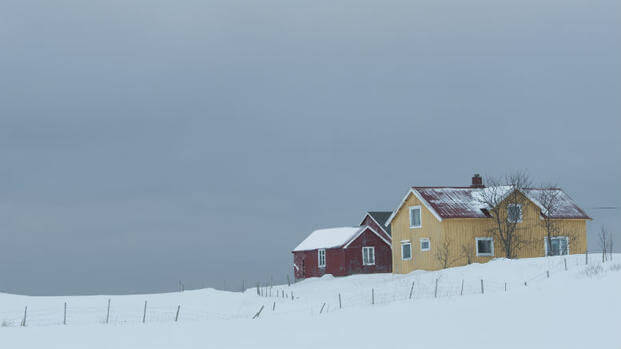The blog's analytics tell me that this post has been unusually popular in the last few weeks. As winter has settled in across most of the country, keeping your house warm becomes a big concern. I hate to spend money on utilities, so I'm always searching for the best way to keep my house warm without a huge ongoing expense. These tips help keep your home comfy without those huge bills:
Window Coverings
If your house is even decently built, you're probably losing most of your heat through the windows. Any window coverings are better than none, but specifically good picks include thermal draperies and honeycomb blinds. Be sure that your window coverings cover as much window as possible. While custom blinds are more expensive upfront, they may save you move over time. Avoid blinds with slats, such as plantation shutters and vertical blinds.
Once you have the window coverings, use them properly. Keep them closed except when the sun is shining in. I'm awful at this - I like my sunlight, even if it isn't warming my house.
Clean Your Filters
Dirty filters make your heating system work harder and decrease its efficiency. Clean or replace your filters monthly for the most effective operations. If you have a hard-to-find size, consider ordering them by the case so that you always have a clean filter handy. Another option is to purchase a permanent filter that can be cleaned by vacuuming or hosing down.
Humidify
Dry air feels colder than moist air. Increasing the humidity in your house with humidifiers, a pot on the wood stove, or damp wash clothes over the radiators.
Weatherstripping
Make sure your windows and doors have adequate weatherstripping on all the sides, and that the foam or brush hasn't worn excessively. For older houses, you may want to recaulk around the windows and around the trim.
Close Your Chimney
If you have a fireplace, be sure that your chimney damper is tightly closed when you're not using it. Consider a chimney balloon to help block the flue, providing extra protection and helping if your damper is warped or damaged. If you will never use your chimney, consider a permanent solution to prevent air loss.
Uncover Your Vents
Most American heating systems use forced air. Make sure your vents, both supply and return, aren't covered by rugs, furniture, or draperies. Flow is the key to forced air systems working properly.
If you have radiators or baseboard heat, move your furniture away from the heat. Sure, it feels great to sit on a couch that's been warmed by the radiator, but then all the heat is getting sucked into the couch and nothing else is getting warm. (There will be someone who says that "hey, eventually that heat is going to disperse into the room." Yup, you're right, but it won't be until the heat has been on an extra 1/2 hour to try to get the rest of the room up to a decent temperature.)
Insulate Your Attic Access
If your home has an attic, it probably has at least one way to access that space. The doors on attic access aren't typically insulated, and you can lose a lot of heat through that thin plywood. There are a couple of options. The most complicated, but most permanent, is to build an insulated box to sit over the top of the access. Mounted on hinged, it gets pushed up when you go up into the attic. I like this option because it only impedes one side of the access, which is nice when you're carrying large items. They also make soft insulated hatch covers, with zippered openings. I worry that they're a trip hazard, but they're very popular and a good choice if you don't use your attic for storage.
Use Your Ceiling Fans
Hot air doesn't do any good if it is congregating at the top of your rooms. Switch your ceiling fans to blow clockwise at the slowest speed. This will slowly pull the cooler air from the lower part of the room and push the warmer air out across the ceiling and down the sides of the room. Experts say this can decrease your cooling costs up to 15%.
Floor Coverings
Rugs or carpets accomplish two things: they insulate, and they feel warm to the touch. They're most useful in rooms over concrete or un-conditioned spaces, such as garages or basements.
Dress Appropriately
Keeping your house a little cooler isn't a big deal as long as the people inside are warm. Socks, undershirts, and sweaters will make a big difference in comfort. Invest in some good blankets, and issue everyone a fleece jacket to be worn at home.
Keeping warm shouldn't have to be insanely expensive. Try these tips and see if you can cut your heating bill this winter.









